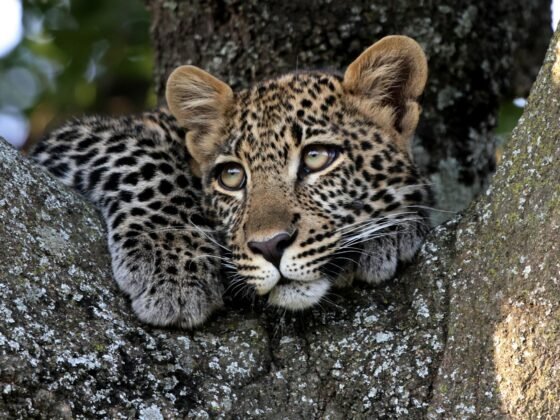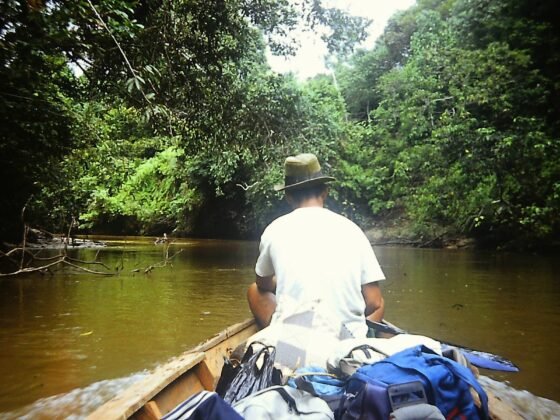The Annapurna Circuit is often described as one of the most beautiful trekking routes in the world, and after completing it three times over 20 years, I can say with certainty that it lives up to that description. True, it has changed since I first walked it in 1984. Then the jeep tracks hadn’t pushed their way up the valleys, making the region more accessible to visits and progress. But this trek, which winds through lush subtropical forests, picturesque villages, and some of the highest mountains on Earth, offers not only breathtaking views but also a chance to experience the culture and warmth of the Nepalese people. Walking the Annapurna Circuit was a life-changing adventure that pushed me to my limits physically, mentally, and emotionally. Yet, every step was worth it.
The Trek: An Overview
At around 200 kilometers long, the Annapurna Circuit circumnavigates the Annapurna Massif in central Nepal, reaching altitudes of over 5,400 meters at the Thorong La Pass—the highest point of the trek. This trail takes trekkers through diverse landscapes, from subtropical forests and terraced rice fields in the lowlands to the arid, Tibetan-like landscapes above 4,000 meters. The route also passes through several ethnic villages, where you can immerse yourself in the rich cultures of the Gurung, Magar, Thakali, and Tibetan communities.
The trek usually takes about 12 to 15 days to complete, depending on your pace and acclimatization schedule. Most trekkers start from the town of Besisahar (820 meters) and finish at Pokhara (827 meters), though the reverse is also an option. For me, the journey was an unforgettable blend of natural beauty, physical challenge, and cultural discovery.
The Beginning: Besisahar (820m) to Chame (2,670m)
We began in Besisahar (820 meters), a bustling town located about 6-7 hours by road from Kathmandu. The air was thick with excitement and the faint buzz of anticipation. Our small group of trekkers, along with our guide and porters, set off early the next morning, making our way through lush subtropical forests. The route was well-marked, with steep ascents that quickly got my heart pumping. As we made our way through the rolling hills, we crossed small suspension bridges, passed charming wooden houses, and waved to children running barefoot along the trail.
The first few days were relatively easy in terms of altitude, with the air still thick and the environment a far cry from the high mountain terrain we would soon encounter. Our first major stop was Chame (2,670 meters), a village nestled in the Annapurna range, where we spent the night in a cozy teahouse. The first taste of local hospitality was nothing short of heartwarming. The people here were incredibly welcoming, and the food—simple yet delicious—was a highlight of each day.
The Ascent: Chame (2,670m) to Manang (3,540m)
As we ascended toward Manang (3,540 meters), the landscape began to change dramatically. The lush greenery started to give way to rocky hills, and the air began to thin as we climbed higher. Our journey was slower now, as we made sure to take regular breaks for acclimatization. Manang, a large village situated at 3,540 meters, was a perfect spot to rest and adjust to the altitude. At this height, signs of the alpine environment became more apparent. We saw yaks grazing in the distance, the air was crisp, and the views of snow-capped peaks such as Gangapurna (7,455m) and Annapurna II (7,937m) loomed larger with each passing day.
Manang itself was a bustling hub for trekkers, with small shops offering everything from trekking gear to local handicrafts. It was also an important stop for acclimatization, as we took a short day hike to a nearby viewpoint, giving our bodies time to adjust before pushing onward to the Thorong La Pass. The sight of the Annapurna range from Manang was awe-inspiring—jagged peaks towering above, their snow-covered faces glowing pink and orange as the sun began to set.
The Challenge: Manang (3,540m) to Thorong La Pass (5,416m)
The trek from Manang to Thorong La Pass (5,416 meters) is often described as the most grueling part of the circuit. The altitude and the distance required careful planning and mental fortitude. The journey begins with a long, steady climb through dry, barren landscapes before reaching the base of the pass itself. The air was thin, and I could feel the lack of oxygen in my lungs as I trudged upward. Every few steps felt like a victory. We had prepared for this moment by taking a slower pace, drinking plenty of water, and getting enough rest to stave off altitude sickness.
The day before crossing the pass, we stayed in the small settlement of Thorong Phedi (4,450 meters), the last village before the ascent. The atmosphere was tense yet hopeful. Everyone was focused on the task ahead, knowing that the high-altitude pass was the most dangerous part of the trek. We went to bed early, preparing for an early start the next morning.
The next day, we rose before dawn and set off in the cold, dark morning hours. The wind was biting, and the snow-covered landscape seemed endless. After hours of slow but steady climbing, we reached the top of Thorong La Pass (5,416 meters) just as the sun began to rise. At 5,416 meters, the pass is the highest point on the circuit, and the view from the top was indescribable. The snow-capped peaks stretched out in every direction, and the vastness of the Himalayan range took my breath away.
At the pass, I joined fellow trekkers in celebrating the accomplishment. There was an overwhelming sense of relief, joy, and camaraderie as we all stood there, together, at the top of the world. The descent to Muktinath (3,710 meters), a sacred pilgrimage site for both Hindus and Buddhists, was long but rewarding. The landscape had shifted again, and we found ourselves in a stark, arid region that felt almost otherworldly.
The Descent: Muktinath (3,710m) to Pokhara (827m)
From Muktinath (3,710 meters), we descended through the Kali Gandaki Valley, one of the deepest gorges in the world. The trail was mostly downhill now, winding through dry hills and dusty paths as we passed through small, peaceful villages like Kagbeni (2,810 meters) and Jomsom (2,710 meters). The weather was warmer, and the surroundings more barren compared to the lush forests of the lower regions. Still, the scenery remained magnificent, and the peaks of the Annapurna and Dhaulagiri ranges continued to provide a dramatic backdrop.
As we neared Pokhara (827 meters), the lush landscape returned. The final stretch of the circuit took us through green rice paddies and terraced fields, and the familiar sight of tropical plants was a welcome contrast to the starkness of the higher altitudes. Arriving in Pokhara, I felt a mixture of exhaustion and elation. My body ached, but my heart was full.
Reflecting on the Journey
Walking the Annapurna Circuit was more than just a physical challenge—it was a journey of self-discovery. The people I met along the way, the natural beauty I witnessed, and the sense of accomplishment I felt after reaching the top of Thorong La Pass were all combined to make this one of the most profound experiences of my life. The Annapurna Circuit is not just a trek; it’s a transformative adventure that leaves you with memories that last a lifetime. If you’re thinking of doing it, prepare yourself for a challenge, but know that the rewards will be beyond anything you can imagine.
In the end, it’s not just the breathtaking views or the physical feat that make this trek unforgettable—it’s the connection to the land and the people, the quiet moments spent in awe of the mountains, and the quiet satisfaction of knowing that you’ve crossed a threshold into something much bigger than yourself.
Robert Ferguson is a writer who regularly contributes to PureTravel. He is also the author of The Nepal Handbook, pubished by Bradt Guides.












